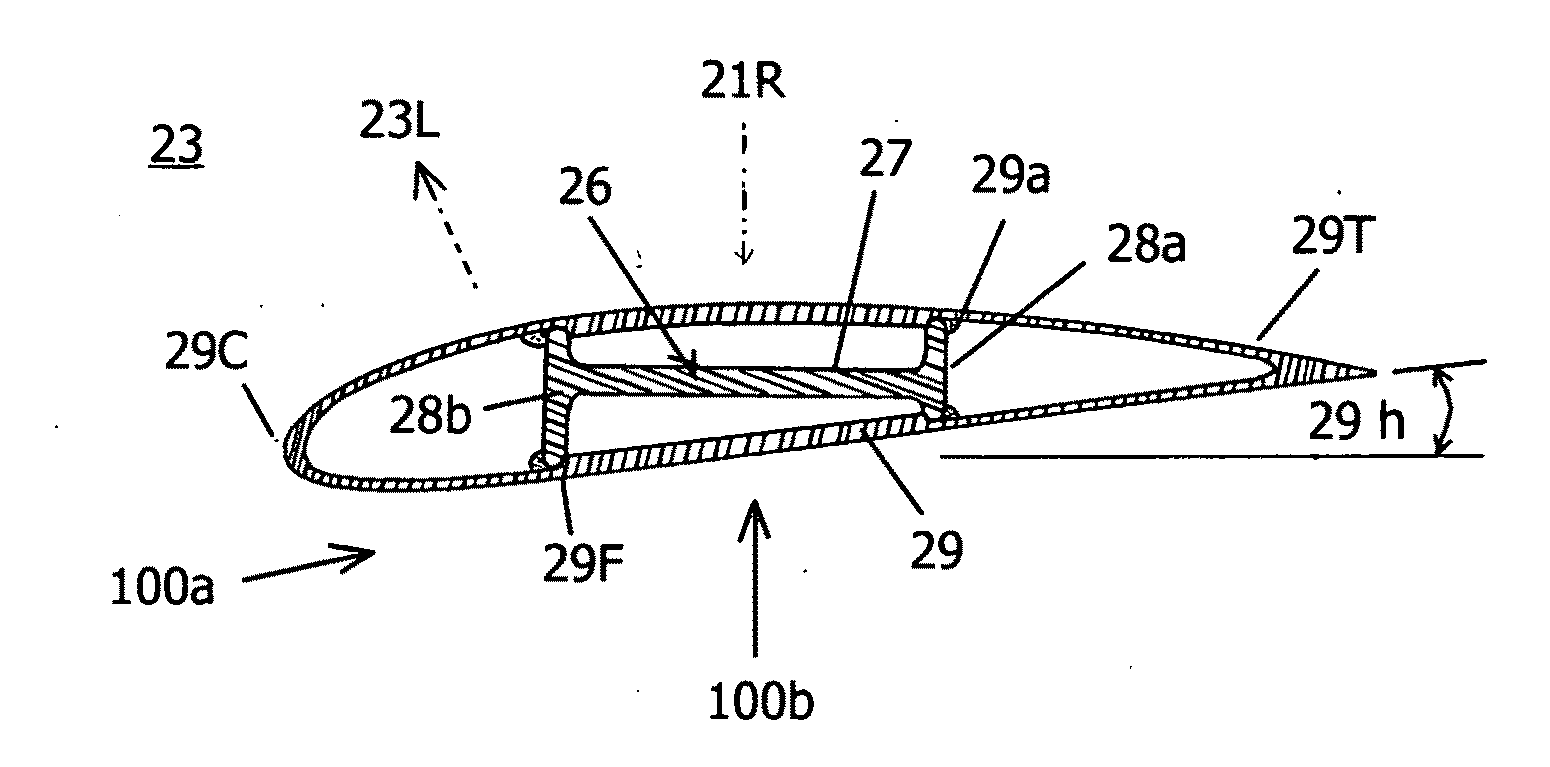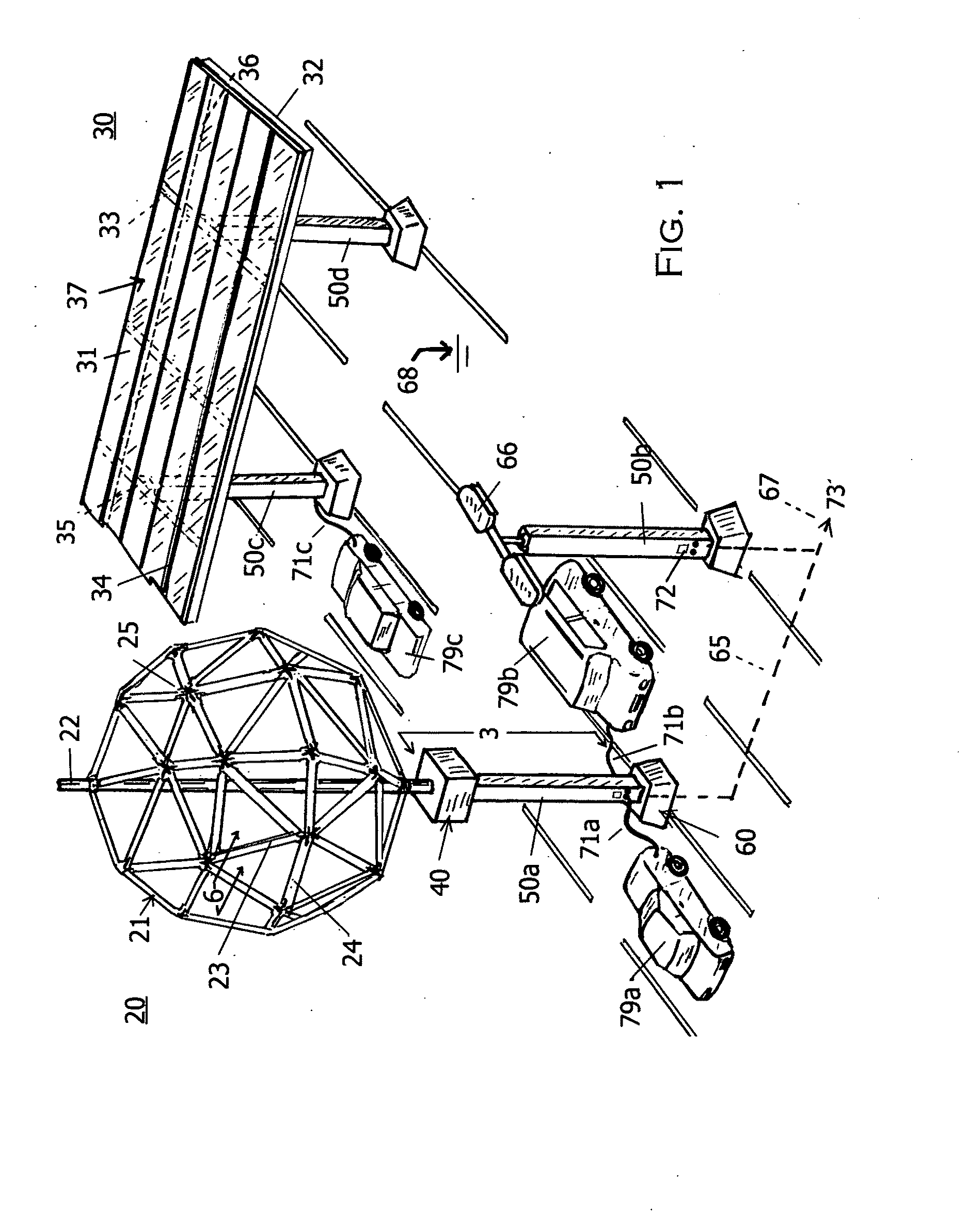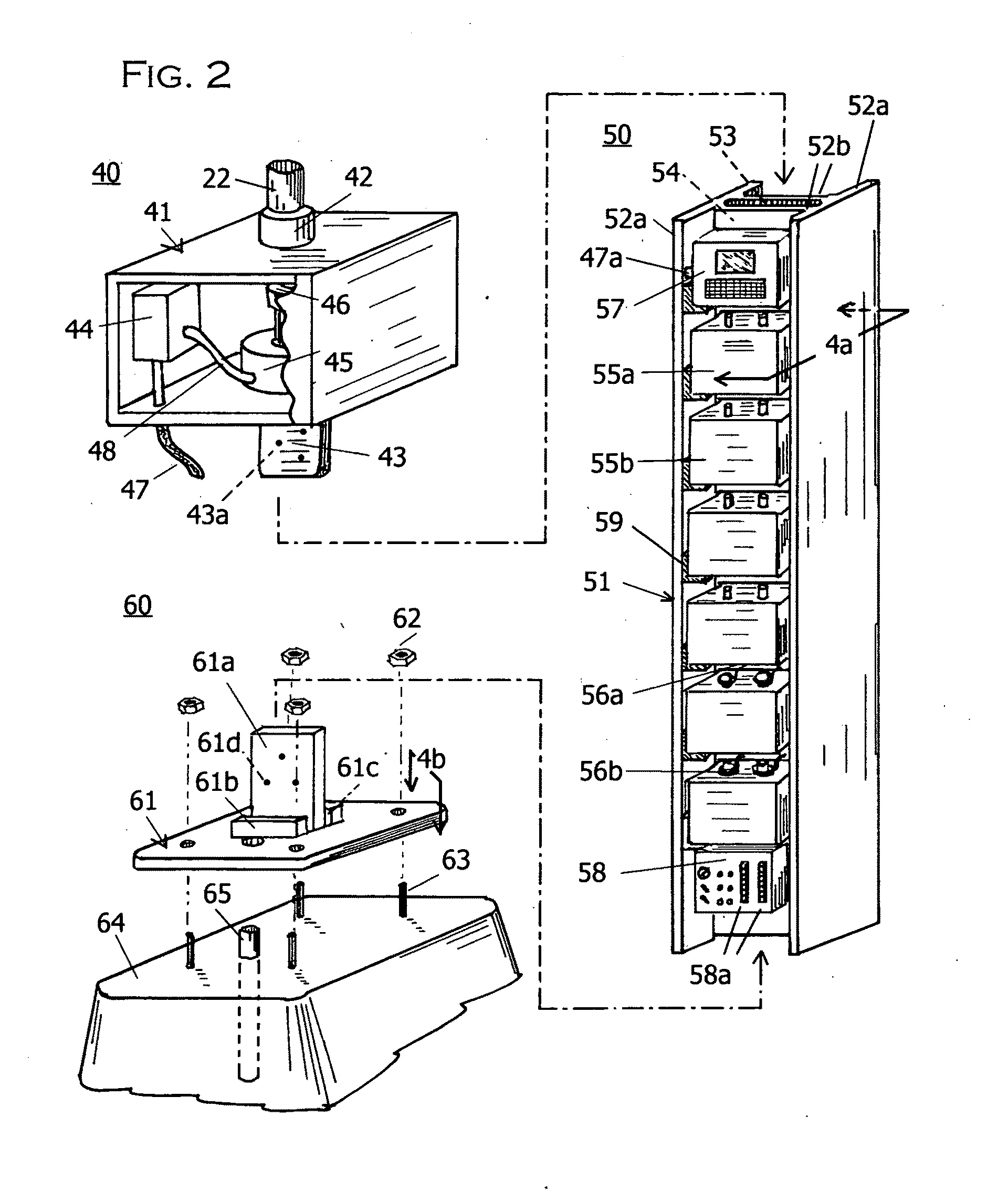Mass produced composite wind turbine blades
- Summary
- Abstract
- Description
- Claims
- Application Information
AI Technical Summary
Benefits of technology
Problems solved by technology
Method used
Image
Examples
Embodiment Construction
Support Stanchion with Integrated Vehicle Charging System
[0045]1. FIGS. 1 through 5 disclose the invention of application Ser. No. 12 / 381,104: A composite stanchion 50 and associated electric equipment with the capability to both support a vertical axis wind turbine rotor 21 and to store / supply energy for hybrid or electric vehicles 79. Stanchion 50 can also support an elevated solar array 30 having an adjustable pitch mechanism for optimum solar collection capability.
[0046]2. Through public facilities to provide for direct supply of vehicle energy from renewable sources; new demand on an already stressed grid structure and carbon emissions from vehicle sources can both be minimized. Additionally, the renewable energy supplied from the invention can be easily utilized for emergency power supply to a nearby building or local grid area for greater energy assurance.
[0047]3. FIG. 1 is an overview of a parking lot 68, with vehicles 79a, b and c are in the process of being charged throug...
PUM
 Login to View More
Login to View More Abstract
Description
Claims
Application Information
 Login to View More
Login to View More - Generate Ideas
- Intellectual Property
- Life Sciences
- Materials
- Tech Scout
- Unparalleled Data Quality
- Higher Quality Content
- 60% Fewer Hallucinations
Browse by: Latest US Patents, China's latest patents, Technical Efficacy Thesaurus, Application Domain, Technology Topic, Popular Technical Reports.
© 2025 PatSnap. All rights reserved.Legal|Privacy policy|Modern Slavery Act Transparency Statement|Sitemap|About US| Contact US: help@patsnap.com



